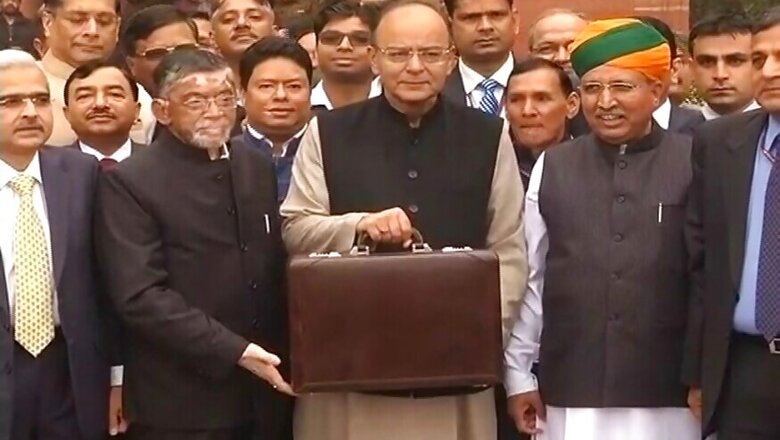
views
Finance Minister Arun Jaitley will present the Union Budget 2018-19 on February 1 around noon. While everyone is speculating about the budget, here's a list of 20 interesting jargons that are used in budget every year.
1.Fiscal Deficit
Let us begin this list of Budget Jargons with the one that will be most talked about in Budget 2018 – Fiscal Deficit. Fiscal Deficit simply refers to the difference between total Revenue collected and total Expenditure done by the Government in a particular year.
2. Gross Domestic Product
Gross Domestic Product or GDP is a monetary measure that refers to the market value of all final goods and services produced in a period (quarterly or yearly) in the country. It is commonly used as an economic performance indicator.
3. Current Account Deficit
Current Account Deficit is a trade measure that refers to a situation where a country’s imports of goods and services exceed its exports.
4. Fiscal Consolidation
Fiscal Consolidation refers to the policies and parameters undertaken by the Government to keep good fiscal health by reducing the deficits and accumulating debt stock.
5. Indirect Tax
Indirect Taxes are taxes on Goods and Services that are typically levied on one entity but paid by another. Eg: GST.
6. Direct Tax
Direct Taxes are taxes that are to be paid by the person or entity it is levied on. Eg: Income Tax.
7. Direct Taxes Code (DTC)
Direct Taxes Code is an attempt by the Government of India to simplify the Direct Taxes i.e. Income Tax Act in the country. DTC aims at raising the basic exemption and do away with various deductions and exemptions to curb tax leakages.
8. Capital Gains Tax
Capital Gains Tax is levied on the capital gains that follow after the sale of an asset.
9. Monetary Policy
Monetary Policy is the set of decisions that Central Bank undertakes to control inflation rate and interest rate in the country.
10. Fiscal Policy
Fiscal Policy is the set of decisions the government takes via revenue collection and spending to influence the economy of the country.
11. Fiscal Year
A Fiscal Year (FY) is a one year period that an entity, individual or the government uses for preparing financial statements.
12. Advance Pricing Agreement (APA)
Advance Pricing Agreements in India tackle complex transfer pricing issues in transparent manner and show how an individual or entity will price transactions with its associates in international settings.
13. Wholesale Price Index (WPI)
WPI is a measure of inflation, or price change, calculated after regularly tracking and measuring the prices of a particular set of wholesale goods.
14. Consumer Price Index (CPI)
CPI is a measure of inflation, or price change, calculated after regularly tracking and measuring the prices of a particular set of household (consumer) goods and services.
15. Fiscal Responsibility and Budget Management Act
FRBMA is an act incorporated in year 2003 that aims to reduce revenue and fiscal deficit of the country with a balanced budget and fiscal intelligence.
16. Dividend Distribution Tax
As the name suggests, it is a tax levied on companies that pay out dividends to its shareholders. It is largely speculated that the government might abolish the Dividend Distribution Tax in the upcoming Budget 2018.
17. Venture Capital Funds
Venture Capital Funds invest in Start-ups as compared to traditionally established conglomerates and companies. With the rise of start-up culture in India, the Venture Capitals (VCs) have also mushroomed.
18. Securities Transaction Tax
STT is a tax that is levied on all securities transactions done at recognized stock exchanges (excluding commodities and currency).
19. Disinvestment Receipts
Money proceedings raised by the Government by selling partial or whole shares of Public Sector Undertakings (PSUs) like HMT, LIC, etc.
20. Tax Slabs
Last but not the least, Tax slabs show the income brackets and the tax rate pertaining to the same and are used to calculate the Income Tax payable by an individual, company or HUF.




















Comments
0 comment